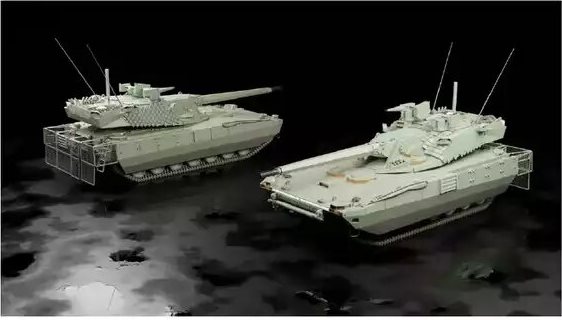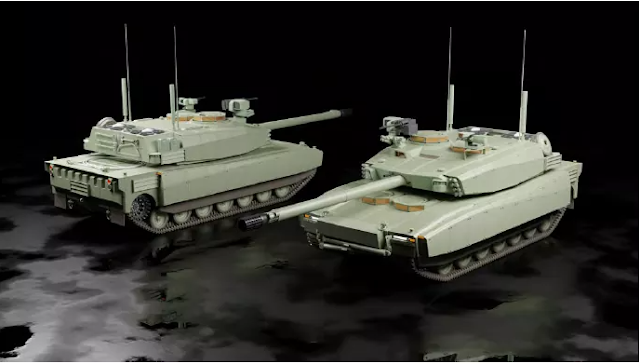
Technical requirements for new combat vehicles:
7.1 Learning Objective 1 from section 1.1.1
Assess the ability of the proposed OMT configurations to conduct combat operations.
• The following were identified as needs for an OMT to conduct combat operations.
- The ability to draw power from an AEU rather than turn on the engines would extend opera-tional capability considerably, reduce strain on the battery bank, and reduce noise signature of a formation while in an long duration/ TAA location.
- HVAC / NBC combined system. Soldiers expressed frustration with the quality of the separate heating system (heating element does not last long enough) and cooling system (insufficiently strong enough). In addition the need for improved NBC detection within an armored system was identified. Having to depend on a hand held unit is 'just one more thing' to keep track of in an already cluttered control node. Soldiers were very receptive to the idea of an NBC integrated HVAC unit that could be swapped out as it failed and would monitor the Air as it circulated the under armor enclosure. If there were an NBC threat detected the sensor would automatically engage the NBC system and alert the crew.
- Fall back to Manual/mechanical capability. Soldiers were adamant that the platform be able to operate with out turret power or an enabled hydraulic system. This would include a fall back to manual loading capability
- Automated Recovery Support/ Auto deploy hook up tow ban Soldiers expressed concern about the reduction in crew size and the amount of platforms required to conduct a like for like rapid recovery. While Soldiers did agree that the number of platforms needed to do a like for like recovery would not change the tasks and capability degrading for each participating system would, the amount of effort required for a 3 man crew to in place a tow bar would need some additional enabling technology to help keep the time spent out of armor to a minimum. Soldiers stated they currently use a 6 member TTP to hook up a tow bar, this normally comes from the system being recovered and the recovering system. If the crew sizes were reduced to 3 then the recovery process would need to include a member or two from the platforms providing security.
- The next generation main battle tank would need improved logistics diagnostic sensors (what needs to be replaced), a track tension sensor to detect imminent failure/ breakage.
- Transparent Armor to enclose SA cameras.
- Spoofing system for enemy target acquisition systems: Soldiers requested the ability to send a false signal for enemy target acquisition systems. This system would send bad data to an enemy weapon systems resulting in the round landing away from the formation, when asked about where the round should go Soldiers wanted the result to be that threat forces could not get an accurate visual on landing to 'wind adjustment' the round on a subsequent engagement. Soldiers wanted the round to be vectored away from the formation (such as short of the formation/ high wide of the formation).
- Independent viewer optics similar to the M2/M3
- Fratricide detection capability, if a target is believed to be a friendly by the computer it sends a 'are you sure' prompt to the gunner.
- An ability to depress the main weapon system to go 'over a reverse slope' capability. Suggestions for how to achieve this were either through a large depression arc or a hydraulic lift capability .
- A digital map board
- Wireless CVC set/ WiFi enabled systems/speakers
- USB plug for charging systems
- Variable size coax; able to handle .50, 7.62, or 4omm grenade weapon systems. Also integrated in such a way such as to reduce observation (such as cowling/ flash suppressor)
- Better back up cameras
- When asked about the WMI Soldier asked that an app be added that would allow for 3-d mapping for drone data as it came in, and for an electronic map board that could be used either in an open hatch (mounting bracket needed) or in closed hatch configuration. The other feature asked for would be for a mission planning module to allow for direct graphic control overlays from the company/ BN. One member went so far as to state that this capability (3-d mapping and graphics over lay) would eliminate the need for terrain models and would enable the plt to brief missions while under armor.
- Better torsion arms
7.2 Learning Objective 2 from section 1.1.2
How do each of the OMT key technologies impact the vehicles operational utility?
• The UAV was seen as the most impactful enabling technology utilized by the crews during the experiment, but there would need to be additional changes to make the three man crew feasible. Additionally, current features evaluated would need to be refined and/or improved
- UAV should be able to assist in the local security of the TAA, desired features to help with TAA security include, an ability to have a top down look out (camera orientation o degree down) to 300 meters around the formation with additional sensors (radar, thermal, proximity detection). It is important that nothing given to the formation require a SM to dismount the tank. The Company has a ground based proximity sensor that is never used because it requires the tank crew to dismount to emplace it.
- The UAV should have a far target locator capability that communicates with the JCR/WMI. All Soldiers concurred that having a far target locator capability on the UAV would increase the capability of the formation.
- The far target locator function also lead into the observation that the UAV should also have the ability to 'laze' (provide a grid, distance, and direction from platform).
- The flight range of the UAV should be the max effective range of the direct Fire weapon system, with the ability to observe/laze out to the max effective range of the direct fire weapon system.
- The UAV will need to have an improved optics package; Soldiers did not find the yellow/green contrast option presented in the VE to be useful. Other improvements to the optics package on the UAV include; matching views with platform display settings(controls, sight picture, HUI) presentation), night vision (PSQ-20-A/B) equivalent, and blended thermal night vision setting.
- The UAV needs to have signal strength/ auto return feature. Soldiers expressed concern that with all of the requested upgrades to the UAV it would become a sensitive item; lightly used in training, and come with a host of restrictions that would prevent the UAV from being leveraged to its full capability.
- The 'Assualt' variant, Soldiers expressed mixed reaction to one members suggestion that the UAV needed to be have a limited ability to engage troops/ or act as a stand off capability for the formation. While all members would never turn down more weapons on the battle field, the task saturation of a stand off UAV did not garner universal support.
- Persistent capability. Soldiers brought up the idea on an optional tether UAV to enable long duration observation
• The inclusion of a UAV that had all of the features discussed pointed to the UAV operator need-ing to receive special training, not only on its use, but on air space de-conflicting,and indirect fires control. Which would put the capability in conflict with the crew progression system currently used (driver/loader/gunner/TC). As a UAV operator would be in the hull with the TC/Gunner yet not be in an active role in platform operation/ only enabling its periphery equipment. If the UAV operator is to remain in the OMT consideration set then the system will require more development to become simpler to use than it already is, almost needing to be intuitive from or to a tank control screen/menu/system so that the cognitive dissonance is not as jarring when trying to juggle multiple roles, or moving from UAV operator to Gunner.
• If the UAV is very expensive then a set of smaller disposable(or easily replaced/repaired) single pur-pose drones should be considered to allow for a mix of gaining quick SA or special purpose (ie lane marking) cases.
• APS was also identified as being the most impactful enabling technology, especially in less survivable OMT variants
• Two IWS stations is too much, consider a CIV and weapon station to prevent one system obscuring the visibility of the other while allowing the TC or loader to scan while the opposite member of the team uses the weapon station. The weapon station should also allow the ability to hand off targets to the gunner.
• The LWRS was a sustain. It should auto-deploy smoke when activated, and give a bearing to the TC.








Т-14 =)
ReplyDeleteIt's piece of garbage? Where? There we can see some of variants of american Leclerc's or Merkava's.
Delete